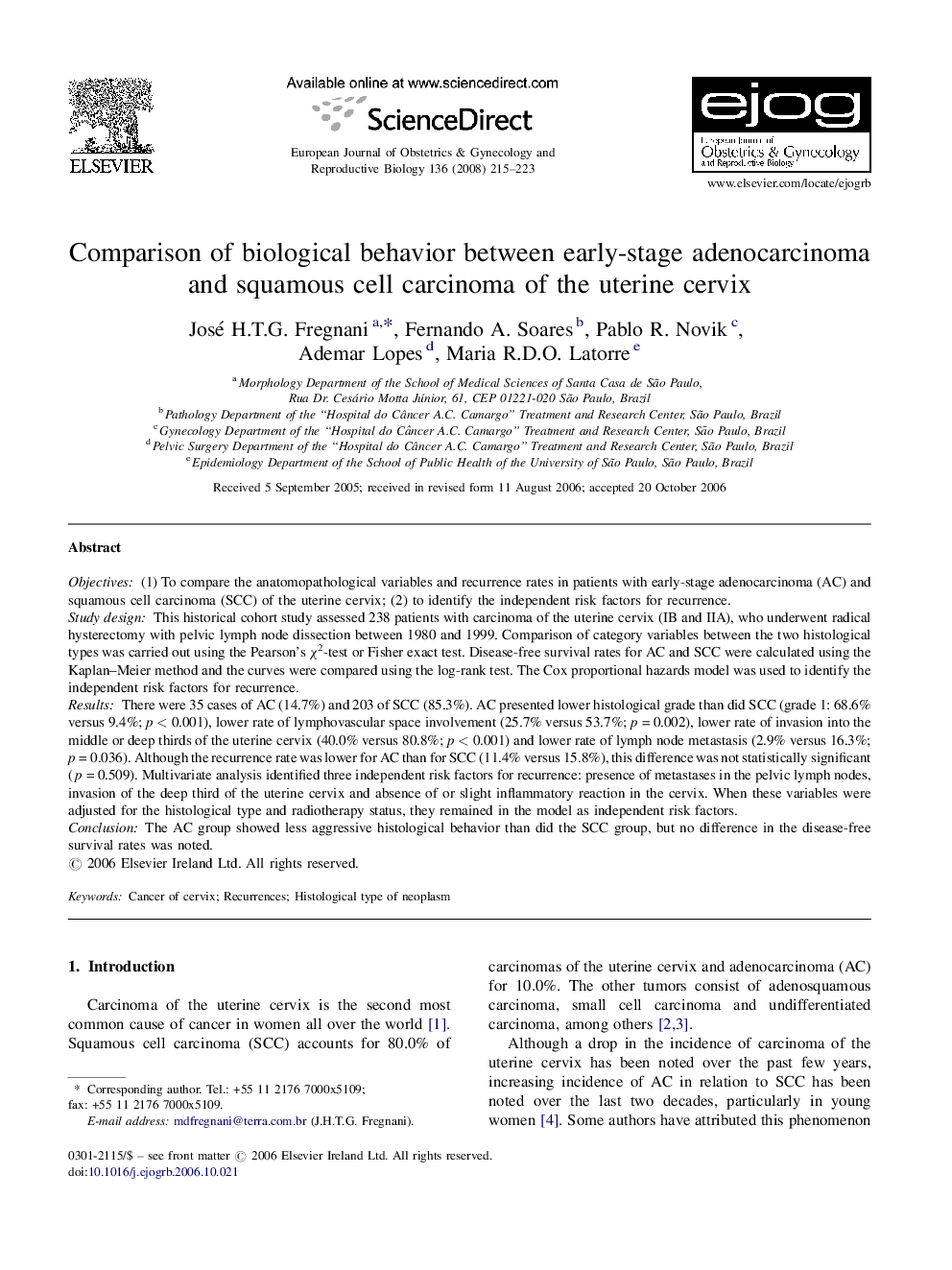| Article ID | Journal | Published Year | Pages | File Type |
|---|---|---|---|---|
| 3922075 | European Journal of Obstetrics & Gynecology and Reproductive Biology | 2008 | 9 Pages |
Objectives(1) To compare the anatomopathological variables and recurrence rates in patients with early-stage adenocarcinoma (AC) and squamous cell carcinoma (SCC) of the uterine cervix; (2) to identify the independent risk factors for recurrence.Study designThis historical cohort study assessed 238 patients with carcinoma of the uterine cervix (IB and IIA), who underwent radical hysterectomy with pelvic lymph node dissection between 1980 and 1999. Comparison of category variables between the two histological types was carried out using the Pearson's χ2-test or Fisher exact test. Disease-free survival rates for AC and SCC were calculated using the Kaplan–Meier method and the curves were compared using the log-rank test. The Cox proportional hazards model was used to identify the independent risk factors for recurrence.ResultsThere were 35 cases of AC (14.7%) and 203 of SCC (85.3%). AC presented lower histological grade than did SCC (grade 1: 68.6% versus 9.4%; p < 0.001), lower rate of lymphovascular space involvement (25.7% versus 53.7%; p = 0.002), lower rate of invasion into the middle or deep thirds of the uterine cervix (40.0% versus 80.8%; p < 0.001) and lower rate of lymph node metastasis (2.9% versus 16.3%; p = 0.036). Although the recurrence rate was lower for AC than for SCC (11.4% versus 15.8%), this difference was not statistically significant (p = 0.509). Multivariate analysis identified three independent risk factors for recurrence: presence of metastases in the pelvic lymph nodes, invasion of the deep third of the uterine cervix and absence of or slight inflammatory reaction in the cervix. When these variables were adjusted for the histological type and radiotherapy status, they remained in the model as independent risk factors.ConclusionThe AC group showed less aggressive histological behavior than did the SCC group, but no difference in the disease-free survival rates was noted.
